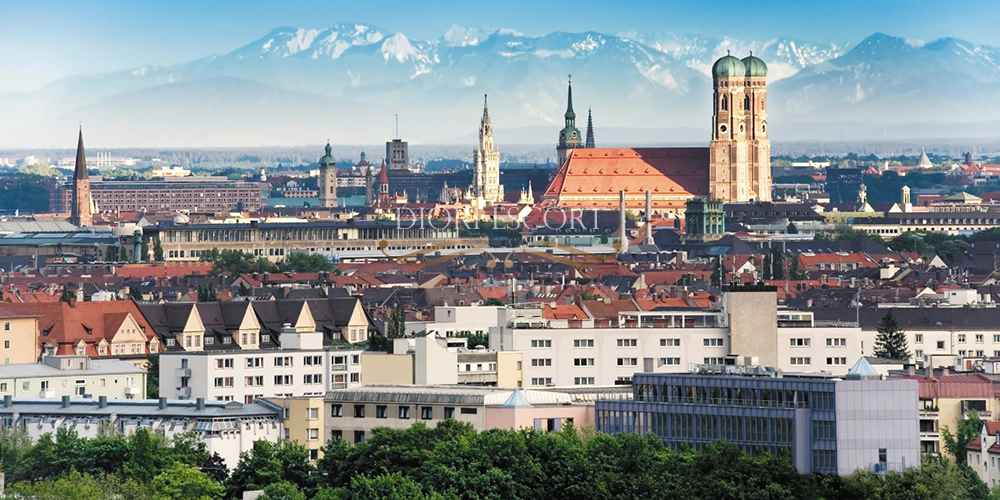10 Things you should know before traveling to Munich
If you’re seeking first-time travel suggestions to Munich, you’ve come to the perfect spot. Traveling to Munich is about much more than visiting a place; it’s about immersing yourself in German culture! Munich is a picturesque city that results from a fusion of tradition and modernity. It is located in Bavaria, Germany’s most traditional and conservative area. You’ll find excellent beer, stunning vistas, vibrant costumes, culture, history, and customs in Munich. Begin planning your trip immediately. We’ve produced a tutorial that will walk you through the procedure to assist you with this. With these travel recommendations, you can have the most pleasing experience in Germany while visiting Munich. Everything you need to know and much more!
-
Travel Tips for Munich
The best way to go to the city
Traveling to Munich is a breeze due to the numerous transportation options available from domestic and foreign locations. There are various ways to go to Munich:
- International Airport Franz Josef Strauss in Munich
- Train Station Central (Hauptbahnhof)
- The ZOB bus station (Zentraler Omnibusbahnhof München) is located in the city center.
The simplest way to travel to the airport is to use the S-Bahn; there are only two lines (1 and 8), and the journey takes roughly 40-50 minutes. If you’re looking for the most convenient way to get from the airport to the city, you can rent a car.
-
Which neighborhood to stay in
Munich features a diverse range of neighborhoods or districts. The most convenient option will be to select an area that is both affordable and appealing to your tastes.
Altstadt is the district in which the historic center is located. You will have everything near at hand, but at an exorbitant price. This region is excellent for individuals who want to be in the historic district, admire the architecture, and be in the heart of the city’s activity.
If you enjoy a cultural environment, Maxvorstadt is the place for you. This region is near the historic district but removed from the noise and bustle. It is home to art galleries, libraries, trendy cafés, and a vibrant nightlife, owing to its proximity to the university district.
-
Bring euros in cash with you.
Although many establishments in Munich take credit cards, smaller stores, market stalls, and neighborhood food establishments such as bakeries and butchers continue to operate on cash. On public transportation, you may also come across coin-operated ticket machines. To prevent making a fast tram escape or missing out on an appealing baked product, it’s a good idea to always have enough euros in your pocket.
-
Make reservations in advance at eateries.
If you choose to dine at a particular restaurant during your vacation, it is worthwhile to reserve a table in advance. Popular eateries fill up quickly, whether they’re neighborhood favorites like Broeding or household brands like Tantris and EssZimmer. This is especially true on Friday and Saturday nights, which means you may be turned away without a reservation.
-
Sunday shopping is prohibited.
Munich is filled with fantastic shops, but keep in mind that most businesses, including supermarkets, are closed on Sundays, so stock up on toiletries and food on Friday or Saturday. In case of an emergency, numerous pharmacies are open on Sundays on a rotating basis, and the airport and central train station both have ’emergency’ stores.
-
The U-Bahn is not, in fact, free.
Although the absence of ticket barriers may mislead you into a false sense of security, it turns out that Germans are simply honest! If you’re traveling on a monthly pass, you may just carry it with you; if you’re using a stripe ticket like most tourists, you must stamp it in one of the small blue machines before descending the escalators to the platform. Though ticket inspections are infrequent, the lines heading to the airport are frequently targeted, so avoid the €60 fee by purchasing a three-day ticket.
-
Cyclists are vicious
In most cities, the vehicles terrorize the bicycles; here, it is the bikers that terrorize the cars! Munich cyclists take no prisoners and charge down the cycle lanes with little regard for pedestrians; they have the right of way over automobiles. It’s not just a matter of receiving bruises; you may also face legal action for injuries sustained by the rider. As a secretively litigious country, practically everyone who resides here is required to get third-party liability insurance.
-
Olympiapark: the city’s best panoramic views
Olympiapark is a park constructed in 1972 in preparation for the Olympic Games. Apart from being an excellent spot to ride a bike or take a walk, this park also features two vistas from where you can enjoy spectacular views of the city:
Olympiaberg: This is a hill within the Olympic Park from which you can see the entire city and if the weather is fine, the Alps in the background.
Olympiaturm: At 190 meters in height, this Olympic tower features a panoramic perspective and a panorama restaurant. The views from that vantage point are fantastic!
Additionally, several events, concerts, sports races, fairs, and sporting events are held in this park. An excellent method to familiarize yourself with the Olympiapark is to take a guided tour, which will educate you on the history of this incredible place.
-
What is there to eat in Munich?
Do not believe that being in Munich means that you will only be able to eat sausages. Due to the city’s size, you’ll have a variety of dining options (Italian, Turkish, Asian, Mexican, Oriental, fast food, etc.) if you’re not a fan of German cuisine. However, if you’re genuinely interested in sampling traditional Bavarian cuisine, you can visit some of the eateries located in and around Marienplatz.
If you want to sample traditional German cuisine at a more moderate price, it’s best to venture outside the city center. Apart from the low prices, these restaurants offer a traditional German tavern ambiance. The most traditional dishes served in these restaurants include Münchner Weißwurst (the famed white sausage), Hendel vom Grill (traditional Oktoberfest roast chicken), Schweinehaxe (pork knuckle), Wiener Schnitzel, and Münchner Leberkäse. And, of course, dessert: “Pfannkuchen” or “Apfelstrudel.”
10. Lederhosen are considered typical.
Did you believe they appeared only once a year during Oktoberfest? Lederhosen is the equivalent of dressing up in a nice shirt on a Friday night before going to the pub. You’ll see them regularly around town and at special events, so expect to see locals wearing intricately embroidered dirndls and stylish coats.





